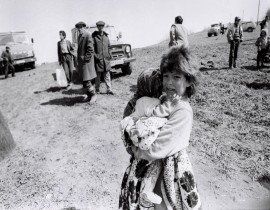Politicon.co
The Power Triangle: Military, Security, and Politics in Regime Change

In his latest book political sociologist Hazem Kandil attempts to make a significant contribution to the existing literature on regime change by constructing a model which he calls “the Power triangle”. With its help, he challenges the traditional perception that political regimes are uniform entities, which should be analyzed as single actors.
This model entails that there are three blocks of power for every regime - military, security and the political establishment. They are interested to dominate each other, but at the same time try to maintain the already existing political order. From this assumption, Kandil has decided to ignore the mainstream approach in the studies on regime change and focus on the popular forces. Instead, he has made interactions within a ruling bloc the central part of his research.
The research question of the book is connected with the three case studies the author has picked for the purposes of analysis – Iran, Turkey and Egypt. Starting from the military coups, which the three countries experienced in 1952 (Egypt), 1924 (Turkey) and 1921 (Iran) each of them undertook different political trajectories. Iran became an absolutist monarchy, later was overthrown by revolution; Turkey evolved into a limited democracy through successive reforms; whereas Egypt metamorphosed into a resilient police state (Kandil, 2016, p.x). The author poses the question “why?” and seeks to explain this divergence. In order to do so, he aims to provide a comparative historical framework, entwined with the analysis of a wide range of primary sources (interviews, official documents, news clips, archival materials) and extensive re-examination of secondary literature. With his research, Kandil also aims to show that the regime change cannot be fully comprehended without a firm grasp of the shifting balance of power within the ruling block.
The book argues that the differing trajectories were due to the dominance of one of the three ruling blocs established just after the founding coup. In the case of Iran, the initial weakness of its military and the lack of coherent security structures ensured that the power was concentrated in the hands of Shah, which closely tied the functioning of the two other blocks to his family and court. This stripped the regime from effective “specialists” of political violence, rendering it weak to internal and external pressures. The military, however, was extremely strong in Turkey as it was involved in the liberation of Anatolia at the beginning of the 1920s and most of the security apparatus was side-lined and controlled by the sultan, loyal to the Western powers interested in carving up the Turkish homeland. This allowed the military to assume the role of the guardian of the regime and intervene every time its stability was at risk. Finally, in Egypt, the defeat in the Arab-Israel war of 1948, subsequent purges by the monarchy and ensuing competition between Nasser and his political rivals significantly weakened the military and allowed the security institutions to rise. This eventually served to suppress virtually any internal opposition and made the regime very resilient.
Kandil also attributes significant influence to the actions of the military after the seizure of power. Although he stresses that normally army is interested in returning to barracks after the coup, as it doesn’t have the capacity to maintain internal stability for long, some military men are interested in keeping the power and creating an authoritarian regime. This results in their parting from the military institutions, allowing their coming to power in the first place. Instead, the security establishment is favored, as it is more specialized in pre-empting and neutralizing all forms of resistance before they can materialize (Kandil, 2016, p.370). Such a situation happened in Egypt after 1952.
The book offers a comparatively long timeframe and seeks to analyze the dynamics of the “Power triangle” from the creation of the regime until nowadays. This approach has largely influenced its structure. Kandil has divided his research into three big sections, which cover all of the cases mentioned. Each of them analyses a separate country and its post-coup regime. The sections are divided further into chapters. Most of them are devoted to the significant episodes of power struggle, which characterized the regime and attempted to change the balance of power between the ruling blocks. Interestingly, some of the struggles can be characterized as coups within the regime itself. This was the most apparent with Turkey, as every chapter is devoted to the so-called “democracy corrective coup”, however, the author has also highlighted such episodes as Nasser’s purging of the military establishment in the aftermath of the 1967 war and the fall of Mossadegh in 1953. Significant attention is also devoted to the description of security and military influence under the specific timeframe of the ruling regime. This allows for a better understanding of the internal power balance within each specific episode of power struggle and helps to better comprehend its results.
The introduction of the book is devoted to the theoretical underpinnings of Kandil’s “Power triangle” model and the justification of his methodological choices. The author relies on a wide range of authors, however, heavy emphasis is put on Pierre Bordieu, who is used to characterize the concept of “regime” and its functions itself. In this sense, Bordieu constitutes one of, if not the most important theoretical pillar of the book. Finally, in the conclusive chapter Kandil has devoted significant attention to the literature on the understanding of civil-military relations and how he hopes his model would contribute to it.
Overall, the application of the theoretical tenets of institutional realism for constructing the model of the “Power triangle” and attempting to dissect the traditionally uniform viewed political regimes deserves praise. It allows explaining different trajectories the regimes can take and why there are significant differences in their nature. It also permits to challenge a somewhat traditional presumption that the change of the ruling political elite also means the change of the regime itself. It is especially useful when analyzing the Arab uprising in Egypt. Contrary to the mainstream opinion in 2012, the election of the Muslim Brotherhood didn’t mean the fall of the old order itself, but merely recalibration of power between the political institution and the security and military ones.
The author has also picked good case studies and regime institutions for his analysis. Kandil (2016, p.21) himself notes that “Iran, Turkey and Egypt have a lot of commonalities in terms of land, population, size, geographic location, religious and ethnic homogeneity and socioeconomic structure. In the timespan of the second quarter of the 20th century, which the book focuses on, they were ruled by archaic monarchies and undermined by external powers. Their development was curtailed by the depletion or exploitation of their resources”.
Speaking about institutional selection for the analysis, Kandil has approached it from the dimension of political violence and created a perfect fusion between the specialists of the violence (which he terms as “custodians” (Kandil, 2016) and political entrepreneurs. This approach allows him to distance from other institutions, which could be considered part of the institutional level of regime analysis (e.g. judiciary or crony capitalists), but are usually not connected with the acts of violence.
The author has also done a superb job in applying his “power triangle” model to the three cases mentioned. The argumentation is sound and he significantly expands on the situation in the aftermath of the founding coups to highlight the main reasons why the internal balance of power between the ruling blocs largely remained the same, despite the constant power struggles described in the book. For example, despite Shah’s attempts to develop the military and countless arms purchases, the economic and infrastructural base of Iran simply wasn’t ready to field a sophisticated high-tech army. Similarly, in Turkey, numerous ruling political parties tried to curb the independence of the armed forces, but they just couldn’t amass enough political support due to the militaries’ popularly perceived role as the guardians of the republic. Especially useful for the overall understanding of the book’s main argument are also highlights on the geopolitical dimension of the ruling regimes. This gives the reader a possibility to evaluate both internal and external influences on the power struggle between ruling blocs and also adds a significant International Relations element to the overall contribution of the book.
However, although the general argument of the book is sound, it still contains some shortcomings and unanswered questions. First of all, in the introduction, Kandil mentions that the military, security and political institutions invest in regime stability and are interested in maintaining the existing order, despite their mutual competition. However, the book rarely provides empirical examples on how it is done. There are hundreds of pages dedicated to power struggles, but rarely ever solidarity or cooperation has been mentioned. The research could have been more robust if stronger emphasis had been made on the consensus-building between ruling institutions in the decision-making processes described (which due to their comprehensiveness and attention to detail are definitely one of the strengths of the book).
Second of all, although the overlapping trend of the author is largely to focus on one single regime per country, in the Iranian section significant attention is also given to the political order after the fall of Shah in 1979. The book has even gone further and described the clerical “Power triangle” and even touched upon the Iranian Revolutionary Guard Corps, which according to the author constitute the “Power triangle” within the existing “Power triangle” (Kandil, 2016, p.119). Although greatly contributing to the understanding of the Iranian regime transformation, it also serves as a distraction from the Shah’s civilian political order and is hard to understand how it includes in the wider research framework and argument presented. It would have been more beneficial if the author in this case had decided to shorten the time frame and not continue his analysis after 1979. This would have allowed providing clearer oversight over the three cases the book focuses on.
Thirdly, there is a bit of a shortage of analysis on the Turkish security institutions. Somehow the Turkey section tends to overemphasize the struggle for power between the military and political structures and sees security institutions as insignificant. Kandil (2016, p.156) himself notes that one of the lasting legacies of Kemalism was extending the army’s responsibilities to domestic security. Perhaps this reason has caused the author to devote comparatively less attention to it. The fact that army can largely be considered to be an overlord of security institutions also poses a question of whether the latter can be considered an independent political actor. If not, then the “Power triangle” model in this sense can’t be fully applicable, since it is based on three largely independent centers of power, which have relative autonomy in their decision making. It seems that in the section on Turkey the security has been largely fused together with the military.
To sum up, Kandil’s latest book is worth reading for anyone wishing to gain an alternative insight into the problem of regime change and its consecutive transformation. The approach it advocates contrasts with the traditional perception that political regimes are uniform entities, which can be analyzed as billiard balls. It also decides to move away from the usual emphasis on the “grassroots” level which has been a prevalent trend in most of the literature on regime change (especially since the beginning of the “Arab Spring”). Moreover the model of the “Power triangle” is excellent to explain the events in Egypt after 2011 and the consecutive regime’s resilience under general Sisi. It has some shortcomings and unanswered questions, but they don’t overly conflict with the research question and the main argument of the book. In my opinion, the author has also achieved one of his overall goals and showed that the regime change cannot be fully comprehended without a firm grasp of a shifting balance of power within the ruling block. Iranian, Turkish and Egyptian coups clearly underline this argument.
Bibliography
Kandil Hazem. 2016. The Power Triangle. New York: Cambridge University Press.
![]()
- TAGS :
- military
- TOPICS :
- Foreign policy
- Military
- Security


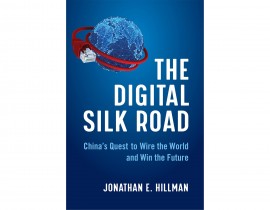
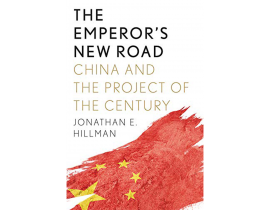

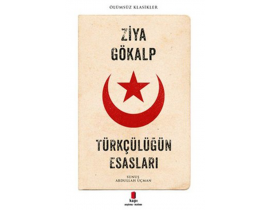
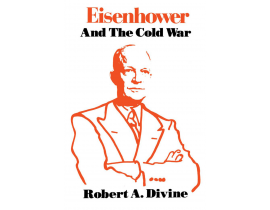
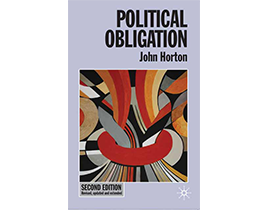
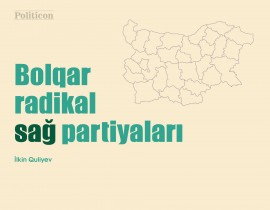
jpg-1599133320.jpg)
